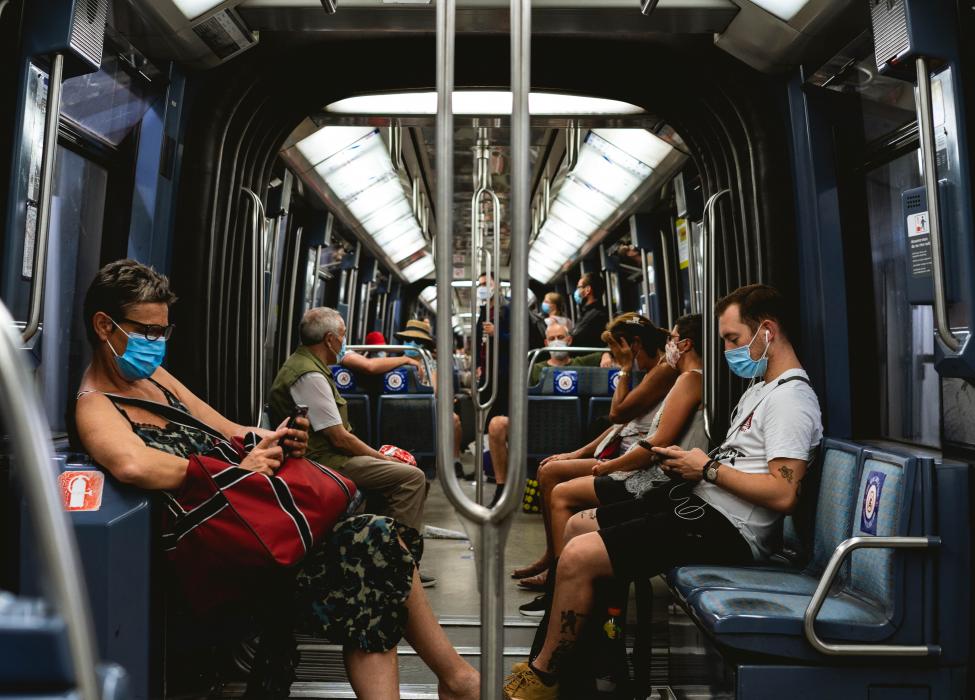
The Oxford COVID-19 Government Response Tracker, the Blavatnik School’s unique global resource that provides comparative, real-time information on government responses to COVID-19, turns two this week.
Powered by a global community of dedicated volunteers, the tracker records real-time policies related to containment, economic support, health, and vaccination in 187 countries and over 200 subnational jurisdictions.
We launched the Oxford COVID-19 Government Response Tracker in March 2020 – a few days after the World Health Organization declared coronavirus a pandemic – thanks to the resourcefulness of Blavatnik School students and faculty who were quick to grasp the importance of keeping track of government policies aimed at containing the spread of the virus. It is now the only continuously updated global dataset on non-pharmaceutical interventions (NPIs) used by governments and policymakers, researchers, the media and the general public the world over.
“Two years into the pandemic, we need comparative information on policy responses as much as ever. What will the “new normal” look like? How will countries respond, if at all, to new surges or variants? As the pandemic has progressed, policy responses have continued to evolve, and we have expanded the data we track accordingly, most recently adding vaccine ‘mandates’ and differentiated data for vaccinated and non-vaccinated,” said Thomas Hale, principal investigator and Associate Professor at the Blavatnik School.
A research note focused on the broad patterns of government responses over the first two years of the pandemic is available now.
The Oxford COVID-19 Government Response Tracker is critical for decision-makers today, providing real-time data to dashboards and models maintained by the UN, WHO, World Bank and many individual governments and businesses. Our data is the most widely used source for researchers seeking to model the progression of the pandemic in order to understand its effects on human health, the economy, or other outcomes of interest.
The project is also critical for future decision-making. By providing a consistent, systematic timeline of this unfolding crisis and, combined with aligned survey data, insight into changes in how our societies have responded, the tracker also provides a key evidence base for efforts to build back from the pandemic, and to build resilience to future ones.
The most-cited dataset of COVID-19 policy decisions in the world, and the only one still publishing new data in 2022
In research, the data in our main repository are downloaded dozens of times each hour. To date, the dataset has over three thousand academic citations recorded on Google Scholar. While we are primarily a data-driven project, our team has also published high-impact articles in journals like Nature Human Behaviour and the Journal of the American Medical Association.
The data also attracts enormous interest from the public and has been featured in The New York Times, Financial Times, BBC, Al Jazeera, The Economist, National Geographic, O Globo, El Paìs, Le Monde, The Globe and Mail, Asahi Shimbun, and the Washington Post – to name just a few.
Perhaps most importantly, the data is used directly by governments, international organisations, and public health agencies to inform their real-time decisions on COVID-19 responses and the feedback we get is that our data is vital to their work.
"This data tells us what options are out there, and we can see innovation as we look at them options and we will learn which ones work in which health systems" – Dame Sally Davies, former Chief Medical Officer for England
"I really commend the work on government responses" – Dr David Nabarro, Special Envoy of WHO, Director-General on COVID-19
Some examples of our contributions:
- UK Cabinet Office: We have been supporting the products of their International Comparator Joint unit, who provide updates to the government and Prime Minister. We provide fortnightly updates on trends and patterns and fortnightly trends and ad hoc ‘deep dive’ data reports on specific topics, for example education.
- The ESRC International Public Policy Observatory (IPPO): We provide monthly global evidence scans on COVID-19 related policy issues using our data. Topics include: online education, gender-based COVID-19 recovery plans, income support measures, ad hoc measures for places disproportionately hit by COVID-19, adult re-skilling.
- UNDP – The Vaccine Dashboard: Together we created the initial data survey to assess the equity in the accessibility and distribution of COVID-19 vaccines around the globe. Looking at 245 countries/nations/jurisdictions, we were able to map out how easily or not vaccines were available, what quantities, and in some cases, the cost per dose that countries had negotiated either directly with manufacturers or through COVAX. Numerous sources of data are used and imported through the dashboard, as well as our Stringency Index, and our H5 indicator (investments into vaccines).
- WHO – Global Preparedness Monitoring Board (GPMB): We developed a 12-page memo on the political barriers to COVID-19 response that informed the 2021 Global Preparedness Monitoring Board annual report. The OxCGRT team identified political barriers that have hindered COVID-19 responses and made suggestions on how to overcome such barriers
As long as the pandemic continues to shift and evolve – and therefore the policy responses that governments make – there will be a need for our data. But producing the Oxford COVID-19 Government Response Tracker is an immense effort. At the core of the project, we have a global team of citizen scientists: over 1000 trained volunteers, working in more than 90 languages, have contributed data to the project so far. We are grateful to each and every one of them, and to our small but global staff team who coordinate this effort.
So the team is currently seeking funding to maintain the tracker going for the next 18 months, and to bolster their ability to use the data to better prepare for the future.
“While at the start of the pandemic the most urgent policy-informing questions pertained to how policies related to case and death rates, over time the list of important questions have grown and become more complex, as educational and job losses, vaccine hesitancy and protests have become more prominent concerns,” said Toby Phillips, executive director of the project.
Recent news
MPP and MSc alumnus Carlos Santiago Guzmán wins the inaugural Michael Cichon Graduate Award
Carlos Santiago Guzmán Gutiérrez, an alumnus of the Master of Public Policy and the MSc in Public Policy Research, has received the inaugural Michael Cichon Graduate Award for outstanding master’s thesis in Social Protection. The award recognises his MSc thesis, “Universal Social Protection Schemes in Forced Displacement Settings: Evidence from Colombia.”



